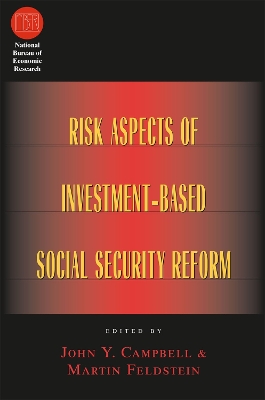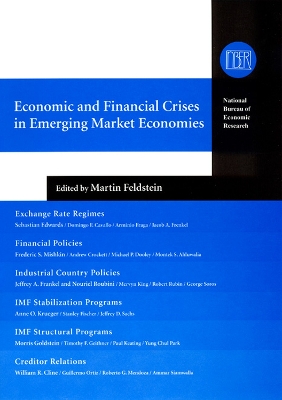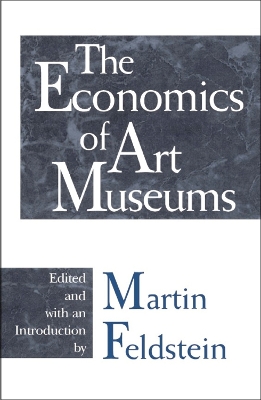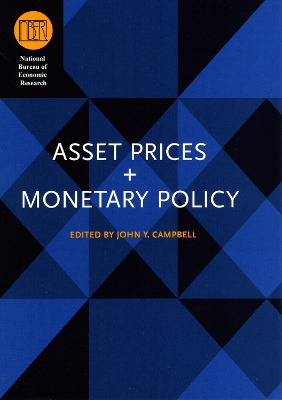National Bureau of Economic Research Conference Report
5 total works
Risk Aspects of Investment-Based Social Security Reform
by John Y Campbell and Martin S. Feldstein
Published 1 December 2000
Our current social security system operates on a pay-as-you-go basis; benefits are paid almost entirely out of current revenues. As the ratio of retirees to taxpayers increases, concern about the high costs of providing benefits in a pay-as-you-go system has led economists to explore other options. One involves "prefunding", in which a person's withholdings are invested in financial instruments, such as stocks and bonds, the eventual returns from which would fund his or her retirement. The risks such a system would introduce - such as the volatility in the market prices of investment assets - are the focus of this offering from the NBER. Exploring the issues involved in measuring risk and developing models to reflect the risks of various investment-based systems, economists evaluate the magnitude of the risks that both retirees and taxpayers would assume. The insights that emerge show that the risk is actually moderate relative to the improved return, as well as being balanced by the ability of an investment-balanced system to adapt to differences in individual preferences and conditions.
Economic and Financial Crises in Emerging Market Economies
by Martin S. Feldstein
Published 1 February 2003
In the late 1990s, economic and financial crises raged through East Asia, devastating economies that had previously been considered among the strongest in the developing world. The crises eventually spread to Russia, Turkey, and Latin America, and impacted the economies of many industrialized nations as well. In today's increasingly interdependent world, finding ways to reduce the risk of future crises -and to improve the management of crises when they occur - has become an international policy challenge of paramount importance. This book rises to that challenge, presenting accessible papers and commentaries on the topic not only from leading academic economists, but also from high-ranking government officials (in both industrial and developing nations), senior policymakers at international institutions and major financial investors. Six nontechnical papers, each written by a specialist in the topic, provide essential economic background, introducing sections on exchange rate regimes, financial policies, industrial country policies, IMF stabilization policies, IMF structural programs, and creditor relations.
Next, personal statements from the major players give firsthand accounts of what really went on behind the scenes during the crises, giving us a rare glimpse into how international economic policy decisions are actually made. Finally, wide-ranging discussions and debates sparked by these papers and statements are summarized at the end of each section. The result is a valuable overview of the key issues at work in these crises, written by the people who move markets and reshape economies, and accessible not just to economists and policymakers, but also to educated general readers.
Next, personal statements from the major players give firsthand accounts of what really went on behind the scenes during the crises, giving us a rare glimpse into how international economic policy decisions are actually made. Finally, wide-ranging discussions and debates sparked by these papers and statements are summarized at the end of each section. The result is a valuable overview of the key issues at work in these crises, written by the people who move markets and reshape economies, and accessible not just to economists and policymakers, but also to educated general readers.
The National Bureau of Economic Research organized a project to explore the economic issues facing the major art museums of the United States. For this purposeNBER defined economics broadly to include not only the financial situation of the museums but also the management and growth of museum collections, the museums' relationship with the public, and the role of the government in supporting art museums.
This volume brings together nontechnical essays on these issues by economists associated with theNBER and personal statements by leaders of America'smajor national art museums and related foundations. It can be read not only by economists but also by museum officials and trustees. Museum directors generally come to their responsibilities with a background in art history and curatorial work but without experience in thinking about the management and public policy aspects of museum administration. Trustees who serve on museum boards generally have a background in business or law but have not previously tried to apply their experience to the unusual economic problems of museums. The background papers, the panelists' remarks, and the summary of the discussion will help them to approach their responsibilities with a better understanding of the problems and possibilities of the museum."
This volume brings together nontechnical essays on these issues by economists associated with theNBER and personal statements by leaders of America'smajor national art museums and related foundations. It can be read not only by economists but also by museum officials and trustees. Museum directors generally come to their responsibilities with a background in art history and curatorial work but without experience in thinking about the management and public policy aspects of museum administration. Trustees who serve on museum boards generally have a background in business or law but have not previously tried to apply their experience to the unusual economic problems of museums. The background papers, the panelists' remarks, and the summary of the discussion will help them to approach their responsibilities with a better understanding of the problems and possibilities of the museum."
The Distributional Aspects of Social Security and Social Security Reform
by Martin S. Feldstein and Jeffrey Liebman
Published 15 June 2002
Social security is the largest and perhaps the most popular program run by the federal government. Given the projected increase in both individual life expectancy and sheer number of retirees, however, the current system faces an eventual overload. Alternative proposals have emerged, ranging from reductions in future benefits to a rise in taxrevenue to various forms of investment-based personal retirement accounts.
As this volume suggests, the distributional consequences of these proposals are substantially different and may disproportionately affect those groups who depend on social security to avoid poverty in old age. Together, these studies persuasively show that appropriately designed investment-based social security reforms can effectively reduce the long-term burden of an aging society on future taxpayers, increase the expected future income of retirees, and mitigate poverty rates among the elderly.
As this volume suggests, the distributional consequences of these proposals are substantially different and may disproportionately affect those groups who depend on social security to avoid poverty in old age. Together, these studies persuasively show that appropriately designed investment-based social security reforms can effectively reduce the long-term burden of an aging society on future taxpayers, increase the expected future income of retirees, and mitigate poverty rates among the elderly.
Economic growth, low inflation, and financial stability are among the most important goals of policy makers, and central banks such as the Federal Reserve are key institutions for achieving these goals. In "Asset Prices and Monetary Policy", leading scholars and practitioners probe the interaction of central banks, asset markets, and the general economy to forge a new understanding of the challenges facing policy makers as they manage an increasingly complex economic system.The contributors examine how central bankers determine their policy prescriptions with reference to the fluctuating housing market, the balance of debt and credit, changing beliefs of investors, the level of commodity prices, and other factors. At a time when the public has never been more involved in stocks, retirement funds, and real estate investment, this insightful book will be useful to all those concerned with the current state of the economy.




